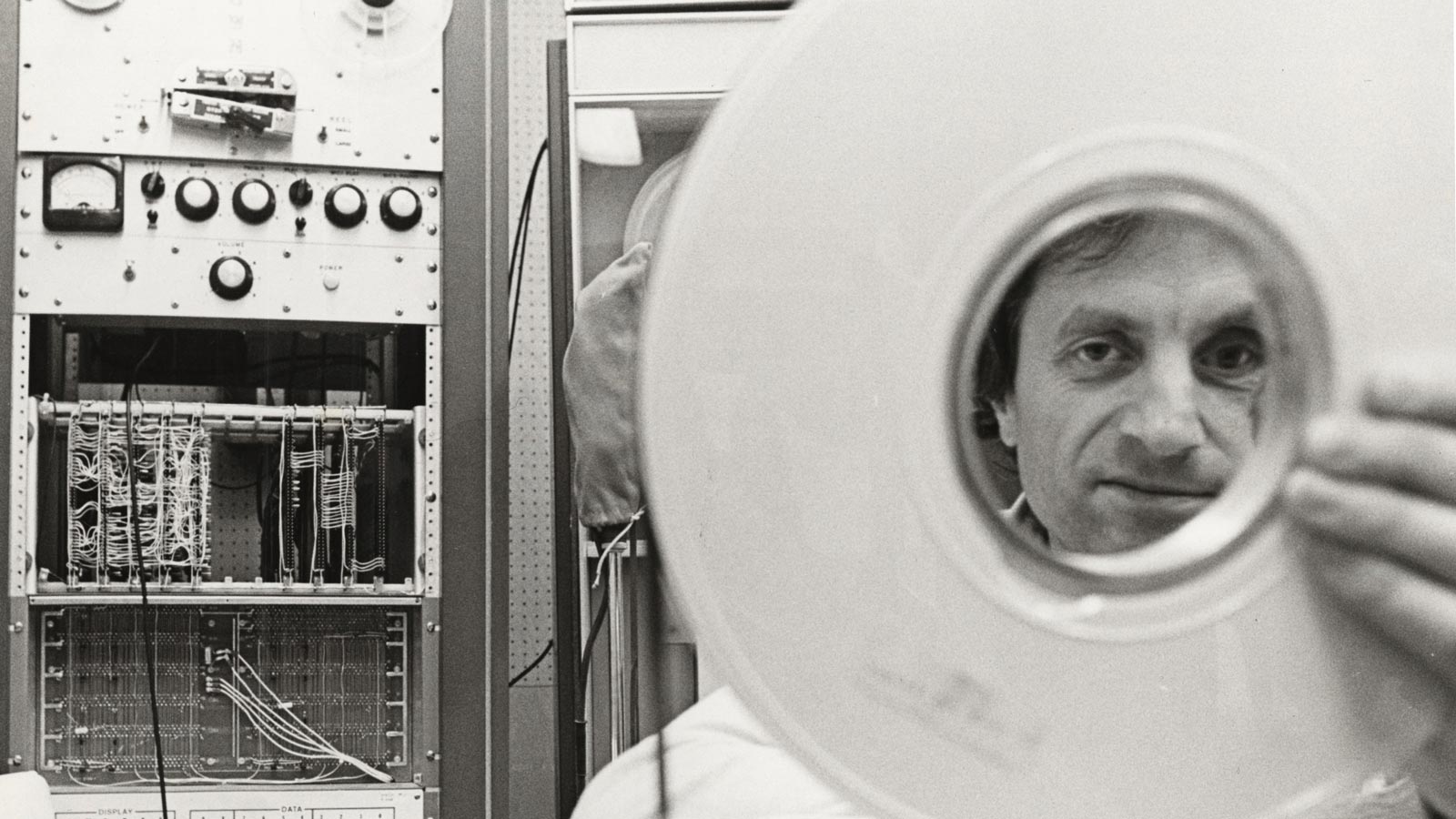The Architecture of Sounds
Works by Iannis Xenakis, Ângela Lopes, Cândido Lima and Diogo Alvim
Event Slider
Date
- / Cancelled / Sold out
Location
Foyer Room (Level 1)Calouste Gulbenkian Foundation
The expression ‘architecture of sounds’ refers to the métier of Iannis Xenakis (1921/1922-2001), an architect and composer by profession, and Diogo Alvim (1979), an architect and composer of instrumental and electroacoustic music, who share, in the works Bohor and Posição Relativa (Relative Position), a singular concern with space.
Bohor, presented for the first time in Portugal, is Xenakis’ first electroacoustic 8-channel tape work, a device with a geometric configuration that invites the audience to place itself ‘inside’ the sound, to be surrounded by a dense and immersive mass of sound that combines recordings of Byzantine song and piano, and the sounds of Iraqi and Hindu jewellery, among other things, developing in a continuum of around 20 minutes towards a progressive morphosis of the sources of the sounds on which the work is based.
Posição Relativa, by Diogo Alvim, is a piece that demands a ‘play of attention and listening,’ in which the resonances of each chord, the synchronised entrance of the musicians and their movement to specific positions, are dependent on the space in which the concert takes place. The piece does not just work the space, but becomes space.
The programme is completed by works by the composers Cândido Lima (1939), one of Iannis Xenakis’ best known academic pupils, and Ângela Lopes (1972), which trace the genealogy of Xenakis’ legacy in Portugal.
ETHNON – Canto do Paraíso (ETHNON – Song of Paradise) for solo piano, by Cândido Lima, is a paraphrase of another of the composer’s works – Gestos-Circus-Círculos (Gestures-Circus-Circles), from 2000-2001, for ensemble and real time electronics, composed for the pianist Ana Telles, a soloist in this concert.
The electroacoustic orchestration Gárgulas d’Arga (Gargoyles of Arga), by Ângela Lopes, combines a small zither, piano and vibraphone with the sound of trickling water on the Serra d’Arga, resulting in different densities, intensities and registers. The title comes from the French ‘gargouille,’ which represents the gurgling sound of water.
Held in the context of the exhibition Révolutions Xenakis, commemorating the centenary of Iannis Xenakis’ birth, the concert-installation is curated by Ensemble DME and is part of the CAM programme.
At the end of the second concert there will be held a talk with the composers and the artistic director.
Ângela Lopes
Ângela Lopes (1972) is one of the most active and prolific voices in musical composition in Portugal, with a significant role in teaching composition, particularly in specialised artistic teaching in the north of Portugal. She has made her name as a composer through a career marked by her work in electroacoustic and instrumental music, frequently based on concepts exogenous to the musical material, such as elements derived from literature, or associated with sustainability or feminism.
Cândido Lima
Cândido Lima (1939) was the founder of the Grupo Música Nova, a reformer of the system of music teaching in Portugal and the first Portuguese composer to approach musical computing at the Universities of Paris 2 and Paris 7, as well as using computers for musical composition. He studied with Iannis Xenakis in private classes and at the Institute of Aesthetics and Sciences of Art, at the Sorbonne, becoming one of his most renowned academic pupils. Among the many events at which Lima has promoted contemporary erudite music, including numerous television programmes, it is worth highlighting his role with Xenakis in June 1973, for the memorable ‘Encontro com Xenakis’ (Meeting with Xenakis) at Cinema Trindade.
Diogo Alvim
Diogo Alvim (1979) is a composer of instrumental and electroacoustic music. He studied architecture and composition in Lisbon, completing his doctorate in composition and sound arts at SARC, Queen’s University Belfast, in 2016, with a thesis entitled ‘Music Through Architecture – Contributions to an Expanded Practice in Composition.’ In his work Posição Relativa, commissioned by the DME project, Diogo Alvim composes not just pitches, rhythms, timbres and dynamics, but also the space.
Iannis Xenakis
Iannis Xenakis (1922-2001) was a Greek architect, mathematician, engineer and composer, and a pioneer of electronic music. He studied engineering at the National Technical University of Athens, which is where he was at the outbreak of the Second World War, when he joined the Resistance. In 1944, during street fighting against British tanks, he was seriously wounded and finally forced into exile. He fled to Paris, where he worked with Le Corbusier on the Convent of Sainte-Marie de la Tourette and the Philips Pavilion. In the field of music, he followed the teachings of Olivier Messiaen and the maestro Hermann Scherchen. During the 1970s, he created his famous polytopes, grandiose spectacles of sound and light, that brought him fame among a wide audience. In the following decade, he developed the GENDY computer programme, which allowed sounds to be produced through a computer. He died on 4 February 2001, leaving a catalogue of more than 150 works, eleven of which were commissioned directly to the composer by the Gulbenkian Foundation.
Credits
Ensemble DME
Ana Telles, piano
Alex Waite, piano
Beatriz Costa, violin
Carlos Silva, clarinet
Marina Camponês, flute
Ângela Carneiro, cello
Francisco Cipriano, percussion
Mariana Vieira, electronics
Jaime Reis, electronics and artistic direction
Rita Castro Blanco, conductor
Production DME
Caio Rodrigues
Cristóvão Almeida
The Calouste Gulbenkian Foundation reserves the right to collect and keep records of images, sounds and voice for the diffusion and preservation of the memory of its cultural and artistic activity. For further information, please contact us through the Information Request form.
